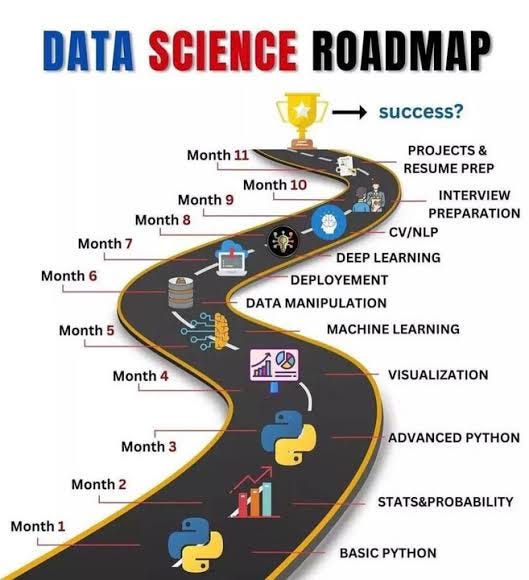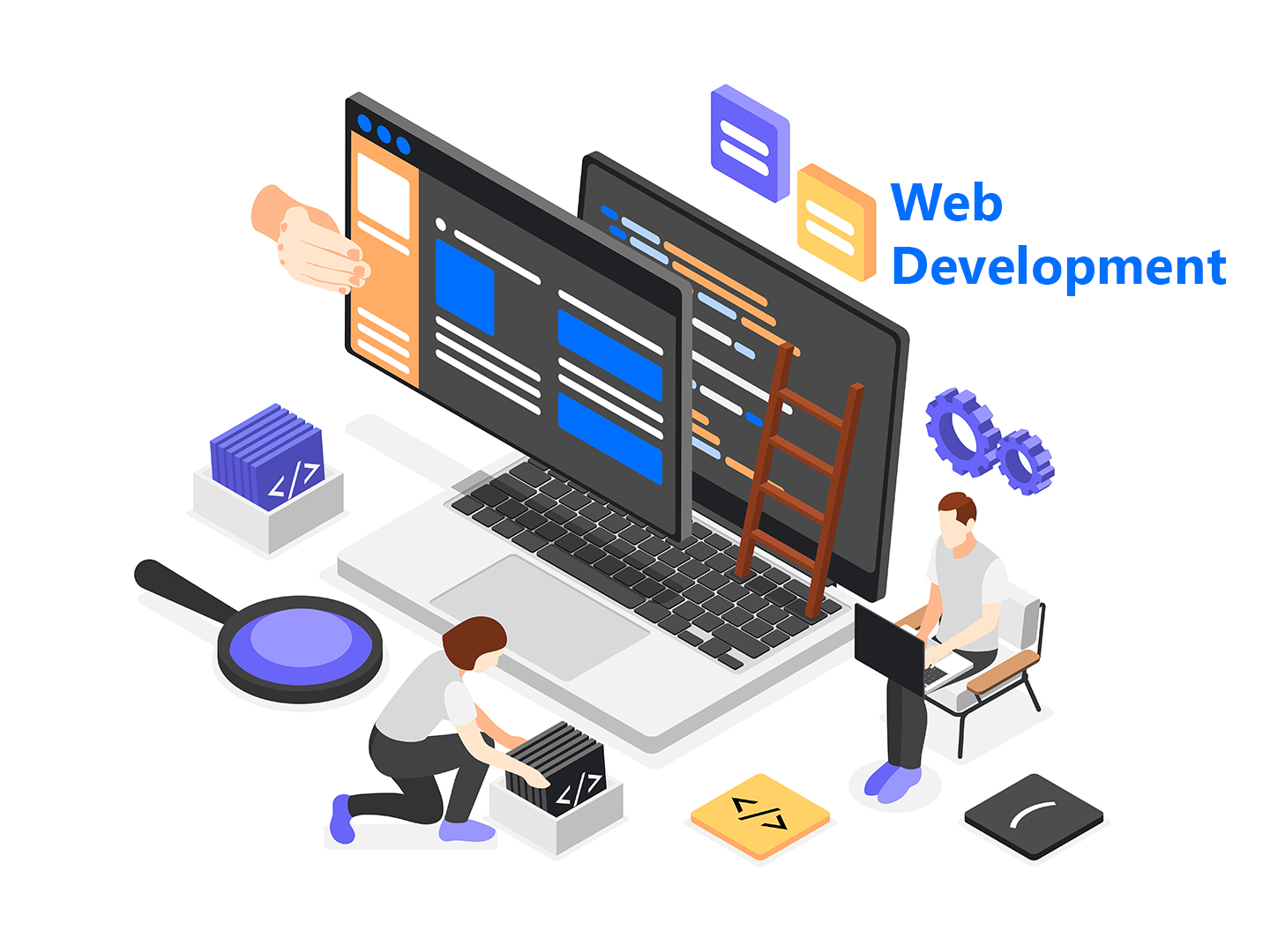
Data science continues to be one of the most in-demand and lucrative career paths in 2024. Companies are increasingly relying on data-driven insights to guide decision-making and fuel innovation. As the industry rapidly evolves, it's essential to have a well-defined data science roadmap to help professionals and aspiring data scientists navigate the growing complexity of the field.
Whether you're new to data science or looking to expand your expertise, this comprehensive roadmap will guide you through the skills, tools, and technologies you need to stay competitive in 2024 and beyond.
What is Data Science?
Data science is a multidisciplinary field that combines techniques from mathematics, statistics, computer science, and domain expertise to extract insights and knowledge from data. It is used to identify patterns, make predictions, and provide actionable insights that can drive business value.
The demand for data scientists has grown exponentially as more organizations understand the importance of leveraging big data. In 2024, the scope of data science has broadened even further, incorporating new trends such as AI, machine learning, deep learning, and natural language processing (NLP).
Key Components of the Data Science Roadmap 2024
1. Programming Languages
The backbone of data science lies in programming languages. In 2024, the essential programming languages that all data scientists should master include:
Python: Python continues to be the dominant language for data science due to its simplicity, versatility, and powerful libraries like Pandas, NumPy, Matplotlib, and Scikit-learn. Whether it's data wrangling, building machine learning models, or visualization, Python covers all aspects.
R: R remains a top choice for statistical analysis and visualization, especially in academia and research settings. For data scientists focused on exploratory data analysis (EDA), R offers comprehensive libraries like ggplot2 and dplyr that simplify data manipulation and visualization.
SQL: Structured Query Language (SQL) is essential for working with databases. Data scientists must have strong SQL skills to query and manipulate data stored in relational databases like MySQL, PostgreSQL, and SQL Server.
Java: While not as popular as Python or R, Java is useful for building big data frameworks and is often used in production environments for scalable data pipelines.
2. Data Manipulation and Cleaning
Data scientists spend around 70-80% of their time cleaning and preparing data for analysis. Proficiency in the following data manipulation techniques is crucial:
Pandas: This Python library is vital for manipulating and cleaning data. Learn to handle large datasets, perform transformations, and deal with missing or inconsistent data.
Numpy: For numerical computations and matrix manipulations, Numpy is essential. It allows data scientists to perform efficient mathematical operations on large datasets.
Feature Engineering: Feature engineering is the process of creating new variables from existing data to improve model performance. It involves creating meaningful features, encoding categorical variables, and handling missing values.
Handling Imbalanced Data: Data scientists often work with imbalanced datasets, where certain classes are underrepresented. Techniques like SMOTE (Synthetic Minority Over-sampling Technique) or undersampling can be employed to address this issue.
3. Statistics and Probability
A strong foundation in statistics and probability is non-negotiable for anyone looking to thrive in data science. Key topics to focus on include:
Descriptive Statistics: Understanding measures of central tendency (mean, median, mode), variance, and standard deviation is essential for summarizing data.
Inferential Statistics: Learn concepts such as hypothesis testing, confidence intervals, and p-values to draw conclusions from sample data.
Probability Distributions: Master important distributions like Normal, Binomial, and Poisson distributions, which are frequently used in data analysis and machine learning algorithms.
Bayesian Thinking: Bayesian statistics provide an alternative approach to inferential statistics and are useful for updating predictions as new data becomes available.
4. Machine Learning
Machine learning is at the heart of data science, and in 2024, its importance continues to grow. Data scientists need to be proficient in the following areas:
Supervised Learning: Algorithms like linear regression, logistic regression, decision trees, random forests, and support vector machines (SVM) are essential for predictive modeling.
Unsupervised Learning: Techniques such as k-means clustering, hierarchical clustering, and principal component analysis (PCA) are crucial for identifying patterns and structure in unlabeled data.
Deep Learning: With the rise of neural networks, deep learning has revolutionized areas like computer vision and natural language processing. Master frameworks like TensorFlow and Keras to build powerful neural networks.
Model Evaluation: Understand key metrics such as accuracy, precision, recall, F1-score, and ROC-AUC to evaluate the performance of your models. Additionally, learn about techniques like cross-validation to avoid overfitting.
5. Data Visualization
Data visualization is critical for communicating insights effectively. In 2024, data scientists must excel at using the following tools:
Matplotlib/Seaborn: These Python libraries allow data scientists to create static, informative visualizations such as line plots, bar charts, and heatmaps.
Tableau: Tableau is a powerful BI tool that allows for the creation of interactive dashboards, making it easier for stakeholders to explore data insights.
Power BI: Another leading BI tool, Power BI integrates seamlessly with other Microsoft products and is widely used for generating interactive reports.
6. Big Data and Cloud Computing
With the explosion of data, handling big data has become a necessity. Data scientists in 2024 need to be familiar with cloud computing platforms and big data tools to process vast amounts of data:
Hadoop and Spark: These frameworks are essential for distributed computing, enabling data scientists to process massive datasets across multiple servers efficiently.
AWS, Google Cloud, Azure: Cloud platforms offer scalable storage and computational power. Data scientists must know how to work with cloud-based databases and machine learning pipelines.
7. Natural Language Processing (NLP)
NLP is one of the fastest-growing fields within data science. As more businesses focus on extracting insights from text data, mastering NLP techniques becomes vital:
Text Preprocessing: Learn how to clean and tokenize text, remove stop words, and handle text data for analysis.
Sentiment Analysis: Use techniques like Bag of Words (BoW), TF-IDF, and word embeddings (e.g., Word2Vec) to perform sentiment analysis and understand customer feedback.
Transformer Models: With the advent of transformers like BERT and GPT, deep learning in NLP has significantly advanced. These models have the ability to process large-scale text data for a wide range of applications, including translation, summarization, and text classification.
8. Real-World Projects and Continuous Learning
Data science is a hands-on field. Gaining practical experience through real-world projects is key to mastering it. Build projects that reflect real business problems and demonstrate your ability to derive insights from data.
In 2024, data science is evolving at an unprecedented pace. Continuous learning through platforms like Kaggle, Coursera, Udemy, and LinkedIn Learning is critical to stay updated on the latest trends, tools, and techniques.
Conclusion
The data science roadmap 2024 highlights the essential skills and technologies that data scientists need to master to remain competitive in the fast-evolving data landscape. By following this roadmap and continually refining your expertise, you can build a successful and fulfilling career in data science.
 Best Mobile App Development Company in Delhi NCR | Oprezo India
Best Mobile App Development Company in Delhi NCR | Oprezo India
 Top Web Development Services in Delhi/NCR | Oprezo India – React JS, Angular JS, eCommerce & More
Top Web Development Services in Delhi/NCR | Oprezo India – React JS, Angular JS, eCommerce & More
 Top Mobile App Development Company in Delhi / NCR | Oprezo India
Top Mobile App Development Company in Delhi / NCR | Oprezo India
 Mobile App Development in Delhi - Android, iOS, Hybrid & Flutter | Oprezo India
Mobile App Development in Delhi - Android, iOS, Hybrid & Flutter | Oprezo India
 Why Oprezo India is the Best Web Development Partner in Delhi NCR?
Why Oprezo India is the Best Web Development Partner in Delhi NCR?